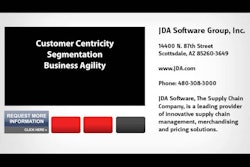
Over the last several decades, there have been major technological advances in managing the landscape of suppliers, service providers and contract manufacturers. These advances range from the first supply chain analysis in 1985, which led the apparel industry to adopt the Universal Product Code (UPC) and a set of standards for electronic data interchange[1], to the more recent ruling from the Food and Drug Administration (FDA) requiring that most medical devices carry unique device identifiers (UDIs). These instances represent advancements in the interconnectivity and seamless work processes between manufacturers and their suppliers, which help reduce errors and manual effort in specific business processes.
These advances have also helped promote overall compliance, collaboration and efficiency. However, this frame of thinking has not been actively applied to supplier quality interchanges and product safety has been impacted as a result. Supplier quality issues often use strictly manual modes of communication and disconnected processes that result in a lack of transparency and a high probability of issues falling through the cracks. This lack of regiment heightens the risk of issues reaching end customers, potentially resulting in brand reputation impact and non-trivial increases in cost of poor quality.
Despite these challenges, the silver lining is that technology is emerging as a solution to business problems that aren’t easily addressed using traditional quality management systems. Though some manufacturers may be reluctant to extend the reach of their supplier quality management system outside of their four walls, there is strong evidence that quality may soon be approved across the supply chain through cloud technologies. In this scenario, modern, cloud-based technology can be used to interconnect suppliers, service providers and contract manufacturers to pre-existing internal quality management systems.
Though all aspects of supplier quality management may not move to the cloud overnight, manufacturers should begin considering cloud-based technology as a solution to business problems that aren’t easily solved using pre-existing, primarily on-premise software. In fact, in IDC’s 2013 Market Predictions report, the firm stated its belief that 70 percent of all chief information officers (CIOs) would embrace a cloud-first strategy by as early as 2016.[2]
The benefits of using cloud-based technology as a key element of a supplier quality solution include:
- The elimination of manual, disconnected processes.
- The enabling of a fully automated, end-to-end work process that extends to all relevant external third parties.
- The aggregation of all internal and external quality data in a single system where advanced analytics can be proactively applied.
Situation in Context
Introducing cloud technology to help manage supplier quality processes is not just about keeping up with the times—cloud technology is simply filling a gap that the technology currently in use cannot easily fill. Currently, most supplier quality management is done through internal systems that have virtually no connection to outside third parties, resulting in inefficiency and heightened risk on various levels.
This risk and inefficiency exists in a broad range of industries and product types, although a sophisticated product example may most easily illustrate the point. Medical devices, for instance, have a very high threshold for quality and can rely on dozens of suppliers and service providers throughout the manufacturing of a unit or product. If one component of a computer-aided tomography (CAT) scan machine doesn’t function properly, a $5 million piece of equipment could fail to function as designed, putting patient safety at risk and resulting in a significant cost to remediate.
One industry that is particularly challenged by supplier/contract management is the pharmaceutical industry. Since 2006, financial pressures have driven this industry to increase outsourcing—across all aspects of the business—from clinical trials to contract manufacturing. Outsourcing allows companies to have flexibility in scale, rather than carrying all of the cost of the operations internally. However, issues quickly arise if every aspect of bringing a product to market isn’t handled with the highest level of quality embedded in the process, potentially resulting in grave implications for the company whose name goes on the label.
The Move to the Cloud
Given that global operations and on-the-go resources mean quality is less likely to be bound within the traditional four walls of your organization, why would your quality processes be any different? Currently, quality is managed internally through on-premise systems that would most likely have a gradual transition to the cloud. This includes audit management, complaint handling, incident management, corrective and preventive action, and change management. However, even when these processes are centralized in enterprise quality management systems, there traditionally hasn’t been technology capable of connecting the quality processes of suppliers and other third parties. The cloud provides the extension that makes it possible for suppliers to interact with the appropriate part of these business processes from the outside world.
In other words, cloud technology provides the gateway that allows third parties to interact with supplier quality management systems that exists in current manual processes, integrating the work processes between contract manufacturers and suppliers that are all part of a larger quality landscape.
When companies first began adopting enterprise quality management software (EQMS), quality was managed in a completely decentralized fashion, and was disconnected both from a process and geographical perspective. Over time, there has been an evolution towards a more centralized quality management, and as more one-off systems are absorbed into these systems, we see a best-of-breed pillar system result. This is rapidly shifting towards a global, enterprise solution with broad use of mobile devices, and the proactive application of advanced business intelligence and analytics on the entire landscape—not just each process in isolation.
Though compliance and safety must always take precedence over cost savings, it should be noted that by applying cloud “extensions” to existing solutions, significant savings can occur through more efficient work processes. While many companies prefer the cloud because it is an operational vs. capital expense, an additional perk is that there is no cost associated with purchasing physical servers or supporting software. In some cases, many aspects of solution support are handled directly by the solution provider instead of needing to be absorbed in house. This ease of adoption results in a more rapid uptake of these emerging capabilities than typically observed with on-premise technologies.
While the benefits of cloud adoption are evident, a company shouldn’t move to the cloud just because everyone else is doing it. Companies should look to adopt the cloud in areas where it makes sense, and delivers business and solution value. In this example, while most internal quality systems are in house and on premise, the first logical step should be to begin managing interchanges between suppliers and manufacturers via the cloud as the first step towards cloud adoption.
By extending in-house quality management systems to allow fully automated supplier quality interactions via the cloud, companies can enjoy the elimination of the limitations and compliance risks in which traditional, disconnected systems often result. The cloud offers an answer to a business solution that previously had no clear solution, while helping increase quality, compliance, safety and bottom lines.
Mike Jovanis is the vice president of product management and strategy at Sparta Systems.
2 http://www.idc.com/research/Predictions13/downloadable/238044.pdf









